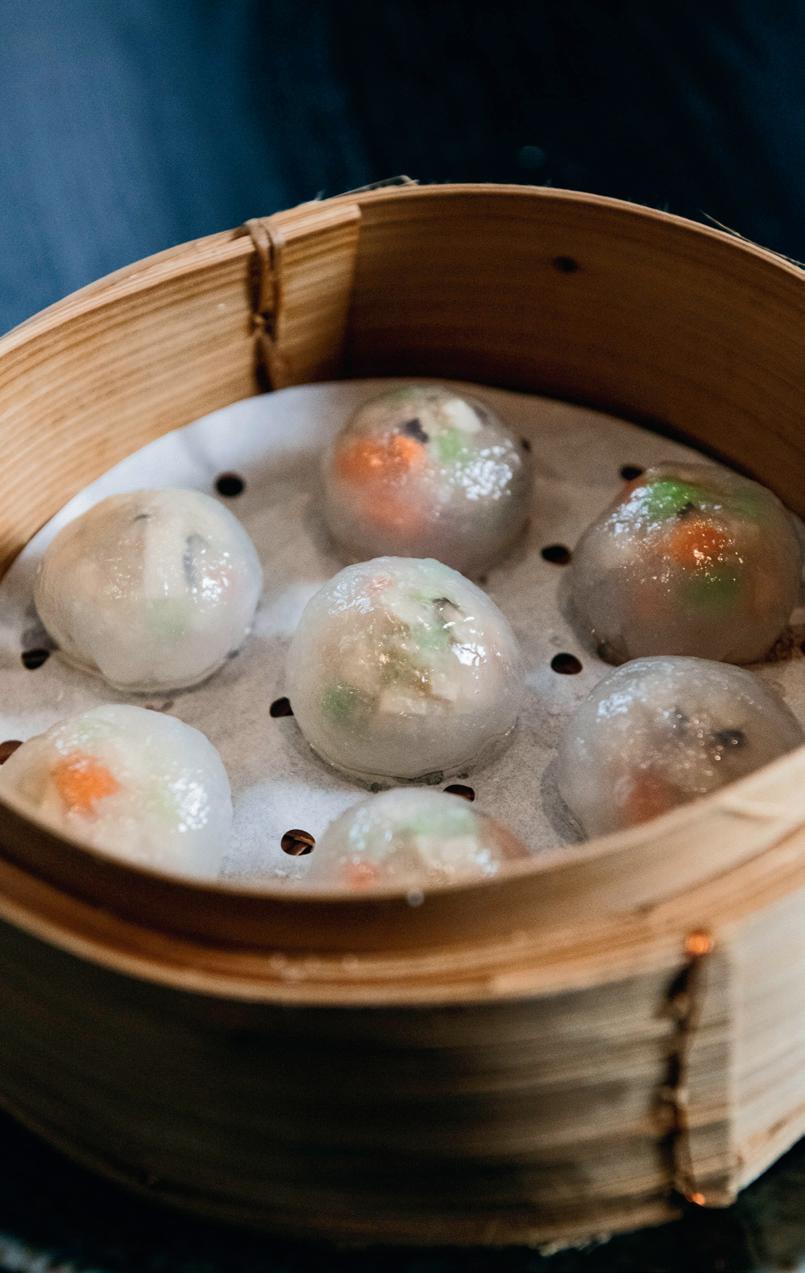
5 minute read
Decontaminating nuts
© Stock.Adobe.com/au/4F.MEDIA
Food manufacturers are always trying to minimise the risk of recalls due to contamination. Almonds, a popular treat around Christmas time, are one of the more susceptible foods. Now, researchers at the Fraunhofer Institute for Environment, Safety, and Energy Technology UMSICHT have developed a new process to kill off germs that can befall almonds and nuts — using compressed carbon dioxide to decontaminate food.
Processing can affect the quality of food, particularly that of plant-based products that are consumed raw. These foods may be contaminated with Salmonella that can cause food poisoning. These bacteria can even spread to dry foods, which experts call products with low-water activity. This group of low-moisture foods includes almonds, nuts, dried fruits, spices, milk powder and even tea.
Karen Fuchs, a researcher at Fraunhofer UMSICHT in Oberhausen, said Salmonella can go dormant to survive on almonds.
“In the process, they produce additional biomass that protects them from desiccation. If water enters the picture, Salmonella then proliferate explosively.
“But it takes just ten to one hundred of these bacteria to cause food poisoning. Contaminated almonds that make their way into production facilities after harvesting can also contaminate other batches.”
In a joint project with the University of Alberta in Canada, Fuchs and her team investigated technologies that could serve to decontaminate almonds. The German Federal Ministry of Education and Research (BMBF) funded this research venture called MiDeCO2.
“It is common knowledge that pressurised carbon dioxide can kill pathogenic bacteria in liquids such as orange juice. Our research has shown that under certain conditions this also works with dry food,” Fuchs said.
Carbon dioxide is not harmful to the environment or health and can be separated from almonds without a trace of residuals. This does not involve any energy-intensive steps for purification.
Retaining the flavour of almonds
In one process step almonds are decontaminated and impregnated with antimicrobial oils using compressed carbon dioxide in a high-pressure autoclave.
The oil extract coats the almond, making it difficult for germs to re-contaminate the fruit. The reported advantage of this process is that almonds retain their characteristic flavour and quality. Fuchs and her team carried out tests with Staphylococcus carnosus, a surrogate organism known for an even more resistant reaction than Salmonella, proving that the process in the autoclave does not adversely affect the shelf life, rancidity or lipid composition of almonds.
“The oils are not just antibacterial; they also have antioxidant properties. They increase the oxidation potential and extend the shelf life of fats, meaning that almonds are not as quick to go rancid,” Fuchs said.
Fuchs said that the antibacterial and anti-oxidative properties are not the only potential benefit. Increasing the amount of oils that harmonise well with almonds’ flavour could also add a tasty touch of seasoning.
This process also lends itself to other foods. The increased lipid oxidation potential could benefit any food that is prone to oxidation.

Kangaroo crystal dumplings.
Image credit: Vow Foods.

Multi-species, cell-based meat on the menu
Cell-based meat start-up Vow recently held a culinary demonstration of its multi-species meat platform.
The dishes were designed, prepared and presented by well-known chefs Neil Perry and Corey Costelloe. Six different animal species were selected from Vow’s cell library and cultivated (grown from cells in a cultivator) for this product demonstration, including kangaroo, pig, lamb, alpaca, rabbit and goat.
Blending technology with the culinary world opens a new creative era in food, and does so in a way that’s sustainable for future generations, Neil Perry said.
“Until now the cultured meat industry has been focused on better ways of making the meat we most commonly eat today,” said George Peppou, Co-founder and CEO of Vow.
“This milestone demonstrates we can grow the cells of any animal, not just those we can farm, marking a turning point for the cultured meat industry and our food system as a whole. To make food without compromise we must stop looking backward to how our ancestors produced and ate food and instead choose how we will eat in the future.”
Vow launched 16 months ago and has a team of 16 scientists, engineers and designers in Australia. The company is now turning its focus on building a meat prototype that “outperforms the sensory experience of any conventional meat we know”, according to Tim Noakesmith, Co-founder and Chief Commercial Officer of Vow.
Yellow food colouring
GNT Group has extended its range of yellow EXBERRY Coloring Foods with a new powder made from carrots.
Available worldwide in addition to the existing liquid format, the EXBERRY Shade Yellow — Cloudy Powder enables manufacturers to deliver a yellow colour shade in a wide range of applications.
The powder can be used in bakery applications as well as dry mixes including custard, brioches and biscuits.
Both the liquid and powder formats are made from carrots grown by GNT’s farmers and are manufactured without chemical solvents.
The EXBERRY Shade Yellow — Cloudy Powder is pH independent and provides good light and heat stability, along with a 12-month shelf life at <25°C.

EXBERRY
www.exberry.com
Plant-based food culture

Fermenting with Chr. Hansen’s FreshQ DA in the food culture solution is designed to help improve the robustness of fermented products against spoilage throughout the value chain, maintaining quality for longer to optimise consumer satisfaction.
Now in its third generation, the latest version is aimed at the growing market for fermented plant-based foods.
FreshQ DA consists of lactic acid bacteria selected for its ability to out-compete contaminants through fermentation.
The product implements bioprotection — an innovation that uses ‘good bacteria’ to fight ‘bad bacteria’, yeast and mould, to help keep food fresh from the inside out.
Extending freshness can enable producers to optimise production and logistics, reducing waste in the value chain. It also gives consumers a longer window during which to eat the food.
CHR Hansen Pty Ltd
www.chr-hansen.com










